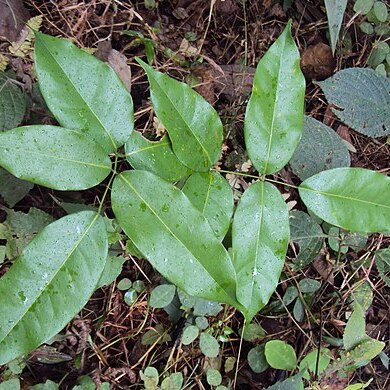Lianas scandent or shrubs, sometimes trees. Leaves alternate, exstipulate, petiolate, odd-pinnate, rarely 1-foliolate; leaflets often many paired, subopposite or alternate. Inflorescences axillary or pseudoterminal, paniculate; bracts ovate-lanceolate; bracteoles lanceolate, margin fimbriate. Flowers bisexual, small. Sepals 5, imbricate, hairy or glabrous, persistent and enlarged after anthesis, closely clasping base of follicle. Petals 5, longer than sepals, glabrous. Stamens ca. 10, alternately longer and shorter, those opposite sepals longer than those opposite petals; filaments connate at base, glabrous. Carpels 5, free, only 1 maturing, hairy or glabrous; ovules 2, erect, collateral. Style slender; stigma capitate, inconspicuously 2-lobed. Follicle 1, sessile, glabrous, smooth or longitudinally delicately thinly striate, dehiscing usually along adaxial suture, rarely at base, often surrounded by campanulate persistent calyx. Seed 1, flattened; testa glossy, glabrous, with a cupular, fleshy aril adnate at base; endosperm absent.
Woody, lianas, sometimes nearly erect shrubs or trees. Leaves imparipinnate, rarely unif-oliolate, when pinnate the lateral leaflets usually approximate or alternate rather than strictly opposite. Inflorescence terminal, pseudoterminal, or lateral, paniculate, usually more slender and with fewer flowers than in the two other genera. Flowers small, usually distinctly pedicellate; sepals imbricate, conspicu-ously enlarged in fruit, sometimes glandular; carpels 5. Follicles almost always solitary, sessile, glabrous or essentially so, containing a single arillate seed.
Calyx appressed in fruit. Seed entirely enveloped by an arillode which is attached near the base opposite the hilum; hilum lateral near the base, small.
Calyx spreading in fruit. Seed entirely or for the greater part covered by a sarcotesta; hilum basal, large.
Fruit dehiscing irregularly around the base.
Fruit dehiscing by a ventral slit.

